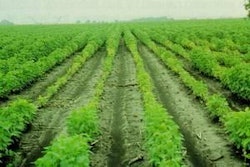
The days are gone where formulating pig diets was a simple calculation exercise in least cost diet formulation. The future requires creativity in feed formulation as well as a much deeper understanding of how nutrients are processed and how they interact within the animal in order to stay ahead of the game in profitable pig production. The ability to look at how we feed pigs with a fresh pair of eyes can bring true innovation to the feed industry.
Embracing change
A lot of research has been done to determine nutrient requirements of pigs for different production stages and different genotypes to optimize growth and reproductive performance. However, while still important, modern pig nutrition is no longer just a simple function of the nutrient requirements of the pig. Regulatory bans or restrictions in the use of antibiotics in feed, compliance with environmental regulations and increasing volatility in prices of major raw materials for animal feed are making us realize that in order to make a profit in pig production, we need to know a lot more than just the nutrient requirements of the pig.
Feed accounts for almost 60 percent of pig production costs, so profitability is going to depend on how efficiently the pig uses the diet to meet production targets. The enforced removal of antibiotic growth promoters from pig diets challenges us to confront the fact that efficiency in diet utilization and good performance very much depends on the effect that the composition of the diet has on gut microflora balance, immunology and health status of the pig. We now understand that not only can we influence nutrient input through the specification of the diet, we can also influence how well the nutrients are utilized by the pig to achieve the desired productive performance.
Vuja dé
Dawna Markova, author of “The Open Mind,” says, “...The more new things we try — the more we step outside of our comfort zone — the more inherently creative we become...”
Perhaps feed formulators should mix with graphic designers and come up with ideas on how to express with images what they are trying to achieve. This would exercise the right side of the brain and initiate thinking more along the lines of feed design than feed formulation.
We all know déjà vu — looking at an unfamiliar situation and feeling that we’ve been there before. But what's valuable to innovation is vuja dé. This term was coined by the comedian George Carlin. Vuja dé means looking at a familiar situation with fresh eyes, as if you’ve never seen it before, which can help you develop fresh insights and move forward on a different path. How can this be applied to the animal feed industry?
Managing risk
A fresh pair of eyes could see feed formulation as a form of risk management in the face of increasing volatility of raw materials prices. The more flexible you become in the types of ingredients you can use in feed formulations without risking pig performance, the better your capability to manage the risk of price volatility, which can have a significant impact on profitability. This might inspire you to look at other industries and their risk management strategies to counter price volatility. How does your perspective of the value of a feed additive change if you can see that they enhance your risk management capability?
Managing outputs
Complying with environmental regulations can increase the cost of manure disposal, particularly in areas with high pig densities. In the Netherlands, the disposal of manure currently represents 5 percent of pig production costs (University of Wageningen 2011). These costs amount to 23 Euro cents per kg of slaughter weight and are set to increase further between now and 2013. There are many factors that can influence the negative environmental impact associated with pig production, but the pig’s diet has the greatest impact.
So what happens if we change our perspective on feed formulation and see that what we are actually doing is managing the composition of manure? How does it change the way we formulate feed and value individual ingredients in the face of increasing environmental regulations and the challenge of foaming manure pits? In terms of contributing to overall profitability, should we put a higher value on feed additives that not only help to reduce the cost of the feed formulation but at the same time reduce the cost and increase the safety of manure disposal?
Managing optimal health
Taking more sustainable action in the way we feed pigs includes finding more effective and safer solutions to manage gut health for more efficient nutrient utilization and healthy pigs. In the past, antimicrobial growth promoters contributed to the prevention of gastrointestinal bacterial infections caused by various stress factors. Experience has told us that because the use of antibiotic growth promoters is thought to cause antimicrobial resistance, it is not a sustainable option in the long run. Antimicrobial resistance is a concern to consumer safety, and the effectiveness of antibiotic growth promoters could be reduced over time.
Looking at feed not just as a source of nutrients to the pig, but also to the microbial populations in the gut, enables us to modify diets to gain much greater control over the composition of the gut microflora and support the animal’s natural defense mechanisms to stress factors more flexibly and efficiently than antibiotic growth promoters ever could. Learning how to profile and monitor different gut bacteria, gaining a greater understanding of the optimal growth conditions of these bacteria and how they interact with gut integrity, immunology and colonization resistance all contribute to further innovation in formulating pig diets with greater returns and promoting optimal animal health. Companies with the relevant research capabilities stand to gain the most in terms of the understanding required for real advancement in feed science and innovation.
Positive outlook for 2012
Formulating pig diets for profit will remain a challenge and requires strong innovative capabilities. Positive thinking and a fresh pair of eyes is the key to the door of creativity and innovation. If you have not committed to a new year’s resolution yet, why not make a point of visiting a company of a friend in a different industry and learn about how they do things? Another idea is to invite a friend working in a company in a different industry for a company tour and ask them what they see. Invite a supplier whose scientific and innovative capabilities you admire to be a partner in your innovation process. They can look at what you do with a fresh pair of eyes and very possibly help boost your innovation and capability to find solutions for feeding pigs.

















